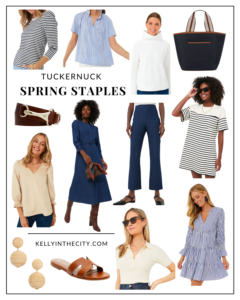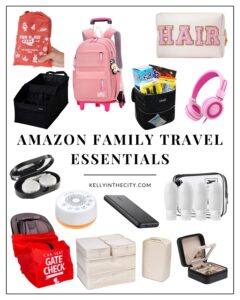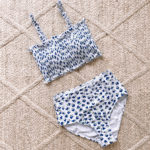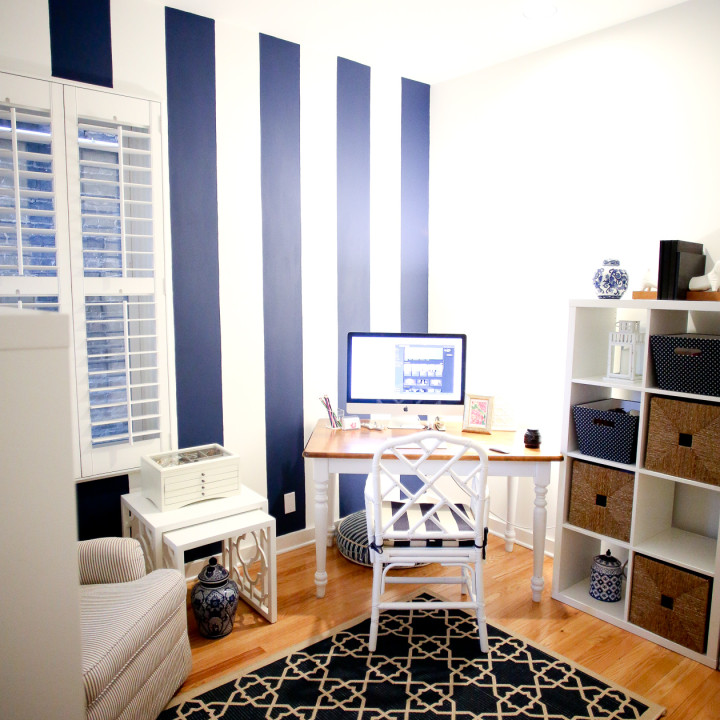Mitch here!
Now more than ever, it’s important to practice social distancing and self quarantine if possible so that we prevent the spread of COVID-19 and protect the elderly, those who have preexisting conditions and/or compromised immune systems, and the medical professionals who are on the frontlines. Let’s work together so that our healthcare system doesn’t collapse.
Anyway, it goes without saying that in no way am I trying to incite panic with this post or encourage hoarding if your community’s stores are visibly struggling to keep shelves stocked. Use your best judgment and consult your conscience before acting, and remember that there is plenty of food in the country, and we’re not running out anytime soon. (Education re: the United States’ food supply chain = less panic + less hoarding!) But it’s important to realize the value of putting thought into what to buy before heading out to buy supplies. Because the fewer the trips to the store, the better.
I’m no authority on the subject, but I researched and prepared for roughly a month before self-quarantining last week–and since I’ve been getting a lot of questions from friends and family, I’m going to share my process today.
Planning
I will admit that I did briefly consider taking a shortcut and buying pre-made emergency packs like this one from Augason Farms, but ultimately decided that it’d be more economical to shop on our own.
The first–and in my opinion, the most important–step that Kelly and I took was taking stock of everything we already had in the house. I was surprised at what good shape we were in to begin with, and if you do it, I think you will be, too! This process also helped us devise an organization and storage plan for the incoming supplies. Our main goal for storage was to keep as much as we could in our kitchen for ease of use, and to relegate longterm items such as canned and jarred foods to the basement. We’ve never had a pest issue in this house before, but we’re new owners so it was definitely on our minds when thinking of where to store everything.
Taking into consideration what we already owned, we then came up with a list of true needs. We shared a collaborative note on our phones and added things as they came up. (Note: When I ran out of ideas, I researched “disaster prep shopping strategies” online and found great resources like The Prepper Journal. Again, not trying to incite panic by using the word “disaster,” but it was helpful.)
The list
We broke up the list into sections based on shelf life. We placed the most importance on longterm supplies because perishable stuff, though luxurious, obviously goes bad faster. And while we mostly bought those canned and jarred products, we also took the approach that we should only buy things that we could see ourselves using. We called it the “Would I Actually Eat This” Test–pretty simple!–and the plan was very clearly to avoid waste.
We broke out the list into the following categories:
- Medicine: While NOT the flu, COVID-19 is a disease that can cause some flu-like symptoms, so I stocked up on medicines that treat them, like acetaminophen, ibuprofen, Benadryl and cold medicine in the children’s and adult varieties. Kelly is one of those Vitamin C junkies during cold season, so we bought bulk drops as well. I also filled as many prescriptions as our stellar (ha) insurance policy would allow.
- Personal care + cleaning supplies: I was shocked at how long this list was. I’ve always thought of myself as sort of a minimalist when it comes to personal care, but my list was a mile long. Luckily, though, most personal care products have long shelf lives. I took notice of everything I used throughout the day: Toothpaste, antiseptic mouthwash, tooth brushes, bar soap, antibacterial hand soap, shampoo, deodorant, laundry detergent, contact solution–the list goes on and on–and so did Kelly for herself and the girls. Kelly is the Queen of Clean around here so we already had a large stock of disinfectant sprays and wipes; antibacterial soap and hand sanitizer; and paper towels and toilet paper.
- Water: COVID-19 is serious, but even the hardest-hit areas of the world have maintained basic services such as water, power and natural gas. That said, I approached this preparation project early, and from a general perspective, so I figured why not and bought a supply of bottled and canned water. A quick note: When storing water for emergency situations, it’s best to consume your older bottles first since the plastic used in those bottles doesn’t have an infinite shelf life.
- Food: As I mentioned before, I divided our food list into shelf life-based categories and focused mostly on the longest-lasting foods.
- Dry-packaged goods: This stuff has a near-infinite shelf life if stored properly, so we cleared out a hard-to-reach cabinet in our kitchen and filled it with dried beans, rice, pasta, mac ‘n cheese, risotto and couscous. I also stocked up on flour, sugar and some favorite spices to keep things interesting and put them in proper storage containers.
- Non-perishables: The bulk of our buy fell into the non-perishable category. Luckily, most of this stuff is cheap. I bought a supply of nuts, dried fruit, pasta sauce and things that come in cans: vegetables, fruit, tuna, chicken, beans, chili and soups. I also threw down on peanut butter. Finally, I stocked up on cooking essentials like oils to keep the kitchen running. I did some research and found some surprising shelf stable stuff such as milk, milk alternatives, powdered eggs and stuff like that. Oh, and Lucy got a wide array of shelf-stable pureed baby food pouches.
- Frozen foods: As mentioned above, it’s unlikely that COVID-19 will result in a disruption to the power supply so using the freezer is a perfectly valid preparation method. I’m a big frozen pizza guy, so I restocked, and replaced our chicken breast, frozen vegetable, meatball, and ground beef supply too. We’re also suckers for Trader Joe’s frozen meals, so we bought those as well. (Admittedly, they’re already gone. Fail.)
- Perishables: I originally bought a good amount of apples, oranges, eggs, butter, and cheeses… but yes, they’re dwindling quickly. Soon we won’t have these luxuries, but we’ve cooked and frozen several meals and treats so that we can have access to them longer. (Egg casseroles, apple crisp, ziti, etc.)
- Fun stuff: Many of the guides I’ve followed online make special mention to remember desserts and treats as you stock your pantry. These are unsettling times, and while treats aren’t essential, they can provide a sense of comfort. To keep ourselves sane and stay busy, we decided to buy baking ingredients instead of pre-made treats. Activities for the win!
Where and how I shopped
Keep in mind that I stocked up before the situation became very serious. If I were shopping now, I would placing the UTMOST importance on wearing gloves, properly sanitizing and disinfecting, looking for stores that aren’t crowded, and letting non-perishable purchases sit out for 24-48 hours before handling.
Aldi: If you read this blog frequently, you’re likely aware of my affection for Aldi and their incredibly cheap groceries. Aldi made this preparation project easy on me because they were well-stocked and inexpensive. They also had nearly everything on my list. And while I’m no longer shopping, the CEO recently announced that it is restocking high-demand inventory frequently, and that the supply chain is just fine.
Pharmacy: In the process of filling prescriptions, we found that all our local pharmacy chains are in stock for basic medicines and, um, giant bottles of wine. (Not a necessity, but hey. No harm in pickin’ up a couple if they’re all lonely on the shelves or whatever.)
Costco: It’s interesting how Costco became the default shopping destination for preppers this week. I do admit to shopping Costco as well, however our first try failed even a couple of weeks ago, as the parking lot was full and it took about half an hour to get back out after we gave up. Costco is great for bulk purchases, but keep in mind that they’re having trouble keeping basics on the shelves. They also tend to be extremely busy, and as we all know, we’re trying to stay away from crowds.
Instacart: Whether to use Instacart, other delivery services and even Amazon during a pandemic is an ethical dilemma. They are, however, starting to use contactless delivery and implement safe shopping practices. (Instacart’s is called “Leave at My Door Delivery.”) If you use them, make sure to tip them accordingly and practice no-touch yourself, too. But food delivery plans like this may actually help to squash the pandemic and that’s pretty awesome.
Amazon, Walmart and Target: We used these stores as a catch-all for the things we forgot or couldn’t find in stores. Profiteers have descended on Amazon, but for the most part, we found everything we needed and it was a great comfort to click “Buy” and cross things off the list quickly. Right now, we’re trying to minimize our purchases and opt to have what we do order delivered in as few boxes as possible. (Anything that arrives we handle with gloves and let sit for 24 hours to be safe, too.)
How we’re proceeding
The Larkin Family is approaching this thing from the better safe than sorry perspective, and self quarantining because we can. It’s difficult to process all the headlines and breaking news coming from the COVID-19 pandemic, but I can say that preparing my house as best I could for this situation (and then staying in the house) has helped me feel less vulnerable. It also gave me something to do with my nervous energy and paternal anxiety. While I realize that many people are not allowed to work from home right now, please stay home if you can.
With any luck, we beat the virus and then have no idea what to do with all these dry-packed beans. It’s certainly better than the alternative.
Mitch. OUT!














